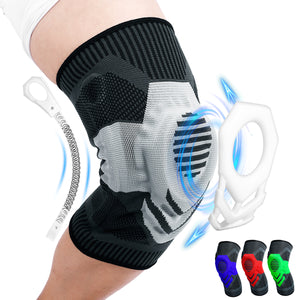What Makes Your Ankles Swell

Ankle swelling, also known as edema, is a frequent ailment in which excess fluid accumulates in the tissues surrounding the ankle joint. Understanding the causes of ankle swelling is critical for an accurate diagnosis and efficient treatment. This article seeks to provide an overview of the most prevalent causes of ankle edema. Individuals who investigate the different causes of ankle swelling might obtain a better knowledge of their symptoms and seek necessary medical assistance.
fivalifitness.com
Common Causes of Ankle Swelling
- Sprained ankle: The ligaments supporting the ankle can strain or tear, causing swelling and pain.
- Fracture or shattered bone: A fracture in one of the ankle bones can result in substantial swelling, acute discomfort, and deformity.
- Fluid retention: Conditions such as venous insufficiency, lymphedema, or congestive heart failure can cause fluid storage in the ankles, resulting in swelling.
- Pregnancy-related swelling: Hormonal changes and increased blood volume during pregnancy can cause excess fluid retention and swelling in the ankles.
- Arthritis: Both osteoarthritis and rheumatoid arthritis can cause inflammation and swelling in ankle joints.
- Gout: A accumulation of uric acid crystals in the joints, which typically affects the big toe, can cause ankle edema.
- Heart Failure: The lower extremities, particularly the ankles, may become flooded with fluid when the heart is unable to pump blood efficiently.
- Kidney Disease: Impaired kidney function can cause fluid retention throughout the body, including ankle swelling.
It's worth noting that these are only a few of the most common reasons for ankle edema. Other reasons that might cause ankle edema include infections, medicines, allergies, and some systemic disorders. A proper diagnosis by a healthcare professional is required to discover the underlying cause and develop an effective treatment plan.
Risk Factors
There are various risk factors that can cause ankle edema. This includes:
- Age: As people age, their circulation may become less effective, resulting in fluid retention and ankle swelling.
- Obesity: Excess body weight increases pressure on the lower extremities, notably the ankles. This can hinder circulation and cause ankle edema.
- Sedentary lifestyle: Living a sedentary or inactive lifestyle might reduce blood circulation and raise the risk of ankle edema. Lack of movement can cause fluid to build up in the ankles.
- Certain drugs might produce fluid retention as a side effect, resulting in ankle swelling. Certain blood pressure medications, nonsteroidal anti-inflammatory drugs (NSAIDs), and hormone therapy, for example, can all cause ankle swelling.
It's crucial to remember that ankle swelling can sometimes indicate a more serious underlying condition, so it's best to see a doctor for an accurate evaluation and diagnosis. They can offer advice on how to manage ankle edema and treat any associated risk factors.
Treatment and Prevention

There are various options for treating and preventing ankle edema, including the use of ankle braces. Here are some common approaches:
- Rest: If ankle swelling is caused by an injury, rest is frequently the best option. This permits the body to repair and lowers the possibility of further injury.
- Ice: Putting ice on a swollen ankle might help relieve inflammation and pain. Apply an ice pack wrapped in a thin towel to the affected area for 15-20 minutes at a time, a few times each day.
- Compression: Using ankle compression wraps or sleeves might assist support the ankle joint and minimize swelling. These compressive garments apply moderate pressure to the area, improving circulation and reducing fluid buildup.
- Elevation: Lifting the affected leg above the heart level can help reduce edema. To stimulate fluid drainage from the ankle, prop up your leg using pillows or cushions while resting or sleeping.
- Medications: Over-the-counter nonsteroidal anti-inflammatory medicines (NSAIDs), such as ibuprofen or naproxen, can help relieve the discomfort and inflammation caused by ankle swelling.
- Gentle exercise and stretching: Gentle workouts and ankle stretches can assist to enhance blood flow and minimize ankle edema. Consult a physical therapist or healthcare physician to determine which exercises are appropriate for your individual situation.
- Ankle braces or supports: Using ankle braces or supports can help give stability and avoid additional injury, particularly during vigorous activity. These devices prevent excessive motions that can aggravate swelling and protect the ankle joint.
- Weight management: Maintaining a healthy weight helps reduce stress on the ankles and lower extremities, hence preventing ankle swelling.
It's crucial to remember that these solutions may not work for every incidence of ankle edema. If the swelling is substantial, accompanied by severe pain or other troubling symptoms, or persists despite home care efforts, it is critical to seek medical attention for a proper diagnosis and treatment plan.
fivalifitness.com
*Disclaimer
The information provided in articles written by Fivali is intended for educational and reference purposes only. The content on this website (www.fivalifitness.com) is not intended to diagnose, treat, cure, or prevent any disease. We do not recommend self-diagnosis or self-treatment based on the information provided in our articles. Always consult a qualified healthcare professional if you have any concerns about your health or well-being.
If you are experiencing any symptoms or discomfort, we strongly encourage you to seek medical attention from a qualified healthcare professional. Only a licensed healthcare practitioner can provide an accurate diagnosis and an appropriate treatment plan tailored to your individual needs.
-
Posted in
Brace, Healthy Lifestyle, Joint, Pain













